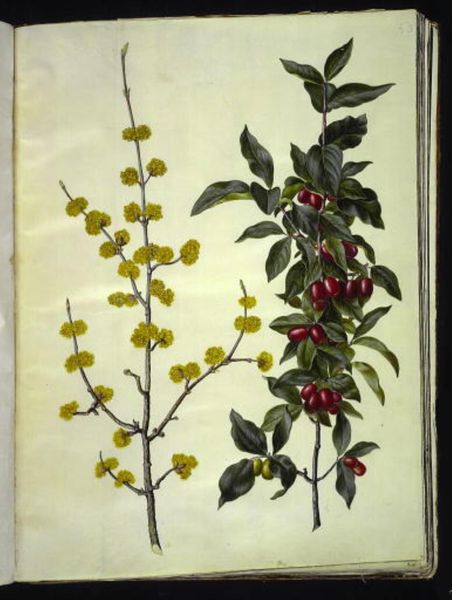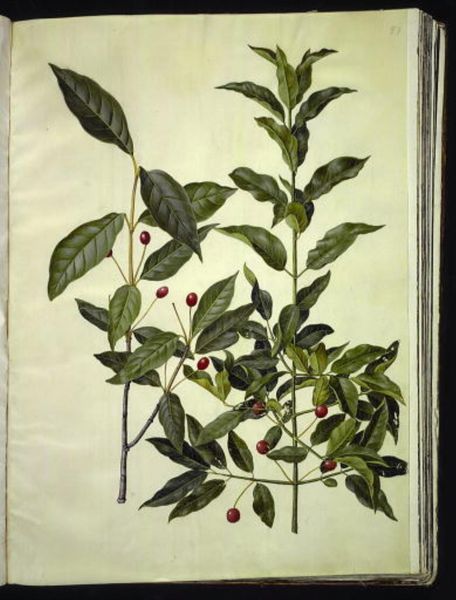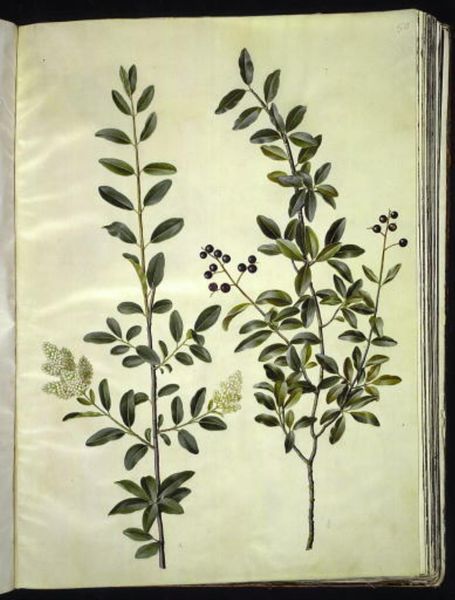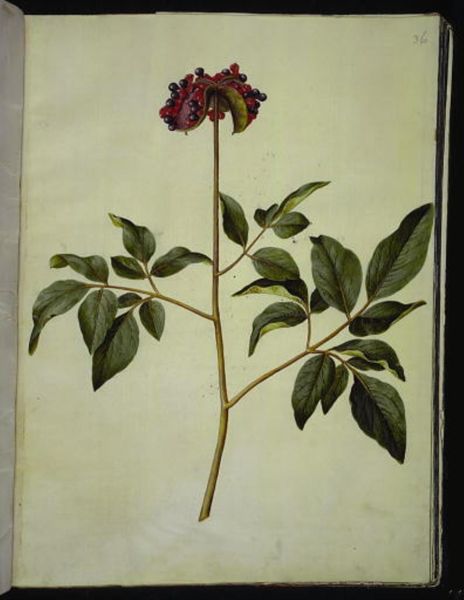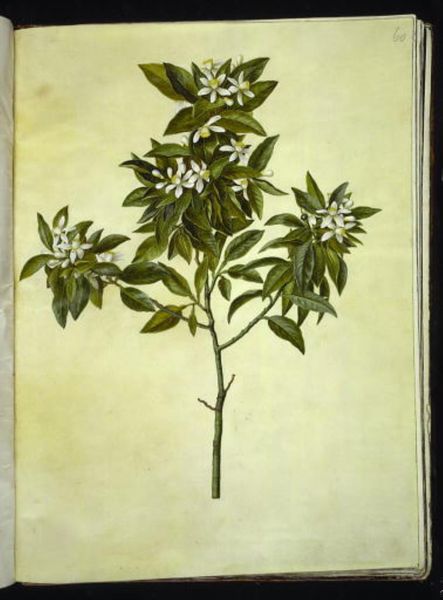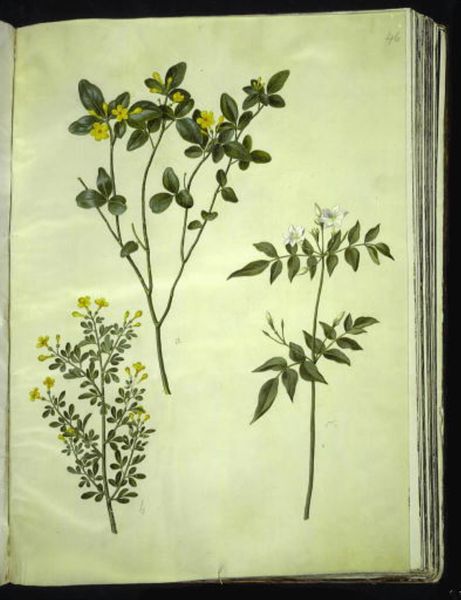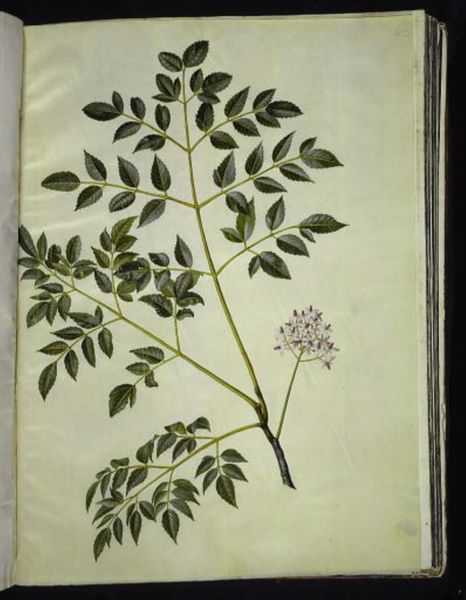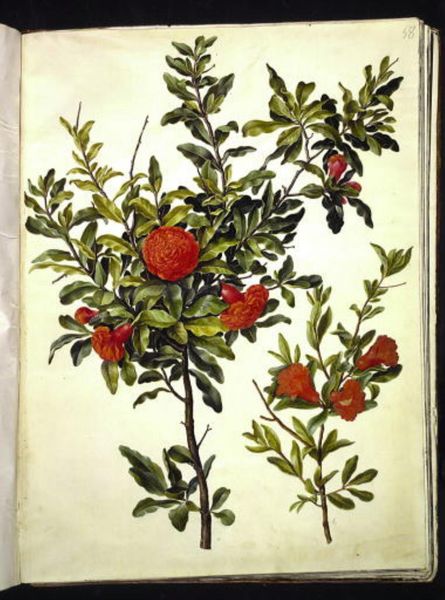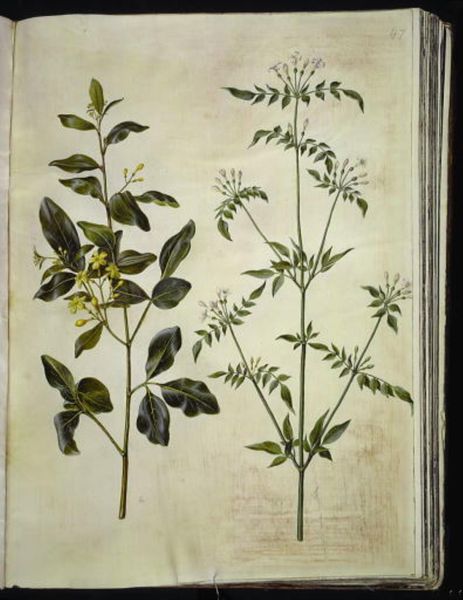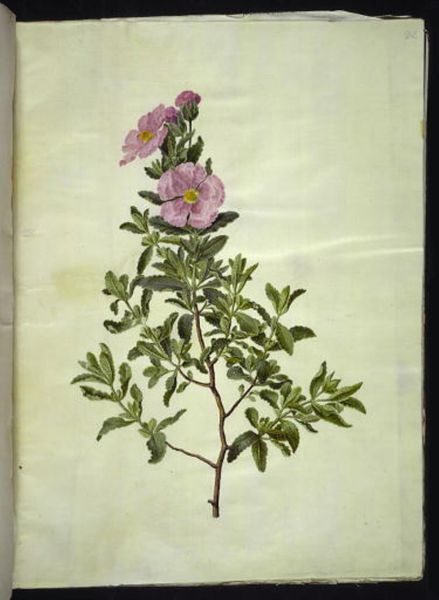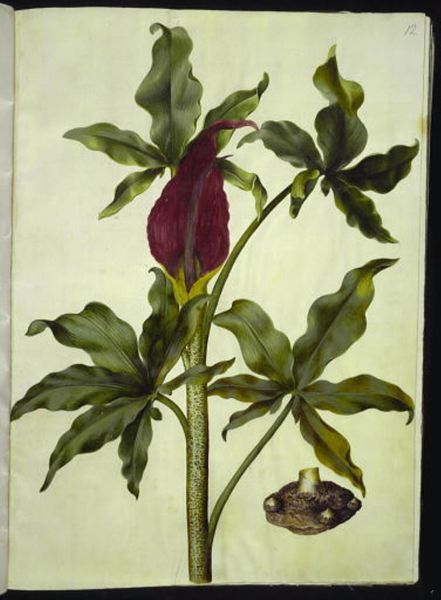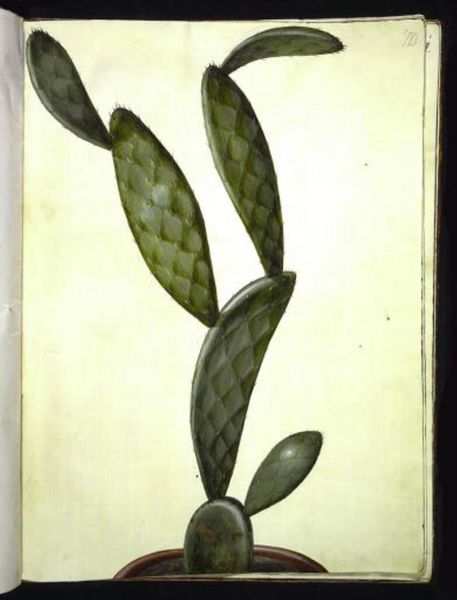
Solanum pseudocapsicum (jerusalem-koralbær) 1649 - 1659
0:00
0:00
drawing, coloured-pencil, gouache, watercolor
#
drawing
#
coloured-pencil
#
gouache
#
watercolor
#
coloured pencil
#
watercolour illustration
#
botanical art
Dimensions: 505 mm (height) x 385 mm (width) (bladmaal)
Editor: Here we have Hans Simon Holtzbecker’s *Solanum pseudocapsicum*, a watercolor, gouache, and colored-pencil drawing from sometime between 1649 and 1659. It feels incredibly precise, like an attempt to capture and classify nature. How might we interpret that impulse? Curator: I see this botanical drawing as part of a larger colonial project. Consider the historical context: the 17th century was an age of exploration and exploitation. Botanical drawings weren't simply objective representations; they were tools used to categorize and ultimately commodify the natural world for European powers. How does that knowledge change your view of the artwork? Editor: It's a little unsettling, to be honest. It feels less like an innocent observation and more like an act of claiming. Does the artist's intent matter in this interpretation? Curator: Intent is a tricky thing. Even if Holtzbecker's intention was purely scientific, the drawing still participated in a system that enabled colonial exploitation. Look at the plant itself – *Solanum pseudocapsicum* – a species native to South America, meticulously rendered. The very act of isolating it, studying it, taking it out of its ecosystem, has political implications. Do you see it now? Editor: I do. It highlights the power dynamics inherent in observation and documentation. So, we can't really separate the aesthetics of the drawing from the historical context of colonialism and early science? Curator: Precisely. Seeing the art within a socio-political context can open up a richer understanding. These beautiful images can be documents of knowledge-gathering, but also of imperial power and control. The plant's image became a possession of sorts, detached from its homeland. Editor: I hadn't considered how deeply intertwined art and colonialism could be. Thank you for helping me see it through that lens. Curator: And thank you. It's through these dialogues that we can unpack the layers of history and power embedded within even the seemingly simplest of images.
Comments
No comments
Be the first to comment and join the conversation on the ultimate creative platform.

